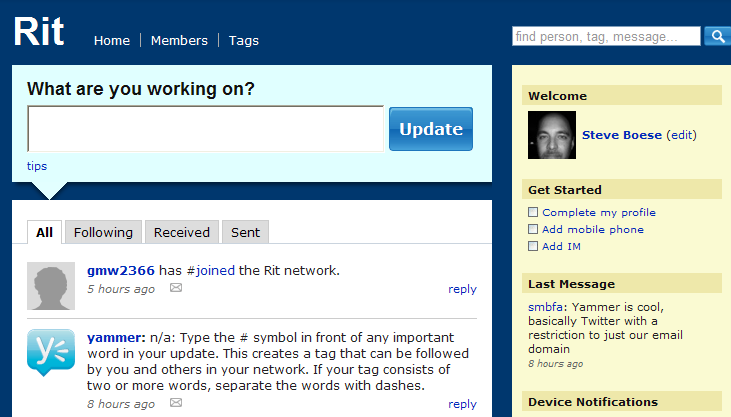I am almost midway through a new HR Technology class and the 'Wiki as intranet' project is just starting to get going, I thought it would be a good time to review some of my key findings and observations on the wiki-based class project and some overall observations about Wiki use in the classroom. Flickr - cogdogblog
Flickr - cogdogblog
Honestly, these observations on wiki adoption also apply to any internal organizations as well, I have rolled out wikis for my faculty group and another internal workgroup and have seen many of these same types of issue.
Overview
I am on my third different wiki platform, (SocialText, PbWiki, Confluence), and while they all have their unique strength and weaknesses, the observations below are valid for all three, and I suspect any other platform you could use. There are two main areas to consider for your class, adoption and administration.
Adoption
1. If Wikis are new to your program, chances are 90% of the students will have never 'used' a Wiki, beyond reading entries on Wikipedia. You will have to devote class time to 'teaching' wiki.
2. You should make wiki use 'required'. Mandate use of wiki for specific projects, activities, discussions, etc.
3. Even though Wikis are touted as simple, no-training-required tools, doing more that adding simple text will initially require demonstration and review for most non-technical students.
4. Wikis that make as simple as possible the steps for embedding video, slide shows, Flickr images, chat, and polls (love Zoho Polls for this), will be most effective in the classroom. Too much 'code' to accomplish these tasks will hurt your adoption plans.
5. For the best chances of adoption of the Wiki as the primary class communication platform, put everything on the Wiki. Syllabus, course overview, assignments, presentations, and any 'sign-ups' should all be Wiki pages. Encourage the class to post questions and comments everywhere.
Administration
1. Get yourself trained! As the instructor or wiki evangelist, you need to be sure you understand, can demonstrate, and clearly articulate the use, benefits, and nuts and bolts of the tool. Students in particular will get quickly frustrated when they encounter technical issues that you can't quickly help them resolve.
2. Old habits are still hard to break, you may need to 'cross-post' for a time in both the Wiki and the old course management system. Certain items like the gradebook still have to reside in the CMS. Try not to make the students have to bounce back and forth between the two platforms too often.
3. While all students are used to group projects, probably none of them will quickly warm up to the concept of 'real-time' editing and commenting on other's content that is the foundation of wiki. You may need to 'push' to get them more actively collaborating in that fashion.
4. Keep the wiki alive even after the class ends. There's lots of good information there. Figure out a way to keep it accessible for students in the future.
I am absolutely convinced that Wikis are a much more effective tool for almost all class activities, with the added bonus of giving the students exposure and experience to a technology they will see in the workplace. I have had several students comment at the end of class that the wiki experience was the most beneficial aspect of the class, and that they had plans to implement wiki technologies in their organizations.
If you have used wikis in your class, post a comment and let me know your thoughts.


 Steve
Steve


